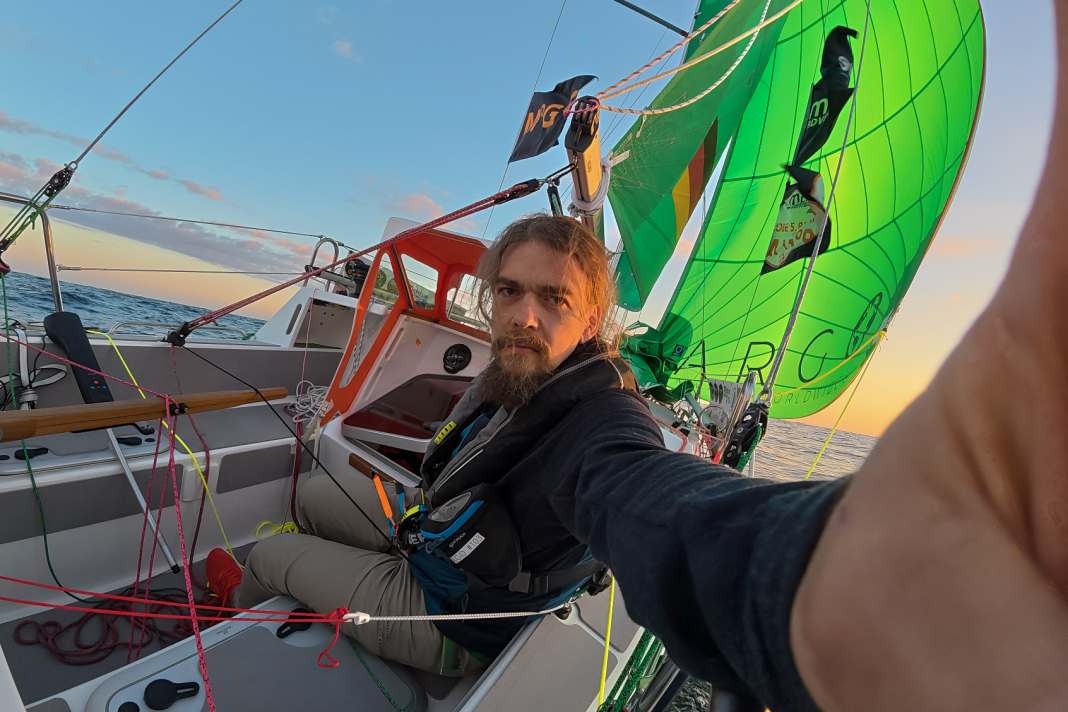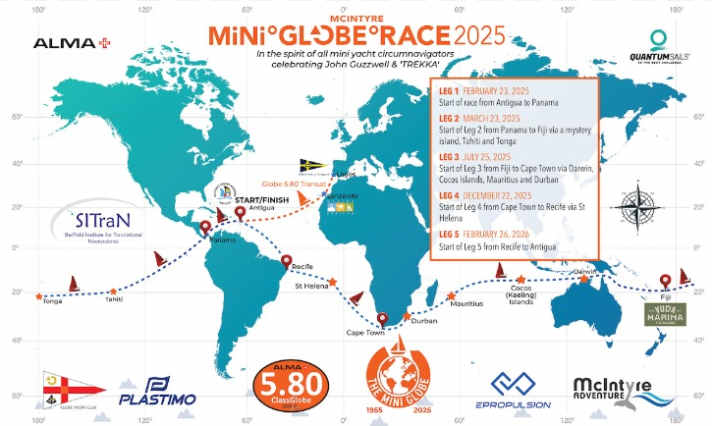





The sun was shining and a gentle breeze rippled the water south of the Canary Island of Lanzarote when the starting signal for the third Globe 5.80 Transat sounded at 2 p.m. local time on Saturday afternoon. With sails flapping in places, some of the participants drifted slowly in an easterly direction across the starting line, which was just a few hundred metres from the harbour pier of the Marina Rubicón. Around 30 people had travelled there to cheer on the sailors.
With a rough wind across the Atlantic
The Swiss Renaud Stitelmann was the first to cross the starting line with his "Capucinette" (construction number 28). The remaining 11 participants had obvious difficulties due to the weak windto cross the line and officially start the race. However, the weather forecast for the next few days is promising.
While some strong areas of low pressure in the North Atlantic move eastwards towards northern Europe, a moderate north-easterly wind of 15 to 22 knots will push the fleet from the Canary Islands towards the equator. Further south, at the height of the Cape Verde Islands, they will then be greeted by the trade winds, with which they will sail west towards the Caribbean. They will need an estimated 25 to 30 days to cover the more than 3,000 nautical miles from Lanzarote to Antigua. According to the organiser, the first Minis are expected to arrive in Antigua at the beginning of February.
Around the world with the Globe 5.80
The Mini Globe Race will start there on 23 February 2025. It is the first of its kind and consists of five stages with several possible stopovers. The route leads around the globe on the barefoot route. Christian Sauer is also planning to take part in the race after successfully crossing the Atlantic.

Shortly before the start, the only German in the race was optimistic. All preparations had been completed and teething troubles had been overcome, that were noticed during the first stage from Lagos to Lanzarotehave been resolved, he said in an interview with YACHT. He is now confident going into the race. Sauer: "We're ready to go - and I'm looking forward to it."
"No better prepared boat"
Thomas Kindermann, team manager and safety officer at Sauer, was also confident. Both the "Argo" and Sauer were well prepared: "He worked with absolute precision when building the boat. Everything was perfected down to the smallest detail." The boat is designed and prepared accordingly; everything is particularly robust, emphasises Kindermann. While some participants focussed on lightweight construction, the "Argo" focused on maximum stability and durability. "There is probably no better prepared boat in the entire field of participants."
More about the Class Globe 5.80 race:
Globe 5.80: A special boat
What makes the Transat race so special is the boat on which the participants sail single-handed. The Globe 5.80 boats, which measure just 19 feet, are not mass-produced, but are all built in-house. Their frames are made of solid wood, while the hull is made of plywood and covered with several layers of fibreglass epoxy. The boats are regarded as safe, easy to build and comparatively inexpensive ocean cruisers that are sailed in offshore races such as the Globe 5.80 Transat and the Mini Globe Race.
